
ESPAÑOL
Cliente: Municipio de Toronto,
Departamento de Transporte Metropolitano, Toronto
Arquitecto: Montgomery y Sisam Arquitectos
Ingeniero Estructural: Delcan Corporation, North York
Tipo: Puente de arco atirantado
Luz: 139 metros
Uso: Peatonal y bicicletas
El Humber River Bridge fue el inicio de una serie de proyectos pertenecientes a un nuevo Plan de Regeneración urbana para la ciudad de Toronto en el que se introdujo una importante red de transporte urbano. La bonita pasarela peatonal se encuentra localizada en la desembocadura del Río Humber que da a la bahía norte del Lago Ontario, y hace la función de conectar varios senderos locales a través de un parque público donde también se encuentran varias playas integradas en el mismo paseo Marítimo; el puente une dos accidentes geográficos, Toronto en el lado este y Etobicoke en el oeste. El moderno puente de color blanco que combina como materiales el hormigón armado para los cimientos y una Super-estructura de acero para soportar todo el peso del tablero, se ha convertido en todo un referente para esta ciudad gracias a su importante innovación estructural.

La bonita pasarela peatonal fue diseñada por la firma de Arquitectos Montgomery y Sisams de acuerdo al Código de Diseño de Puentes de Carretera de Ontario 1993. El puente salva una luz de 139 metros de longitud total para cruzarlo de un lado a otro y está formado por una Super-estructura de acero con sus característicos arcos inclinados de acero tubulares. Ambos arcos gemelos disponen nada menos que de un diámetro de 1.200 mm. de alta resistencia, y su punto más alto se encuentra a 21.3 metros de altura sobre el lecho del río. Una de las particularidades de estos dos grandes arcos de acero es que se abren en el arranque de la estructura para dejar paso al tablero y se unen en gran medida en la parte superior mediante una celosía de figuras geométricas triángulares también de acero; este caparazón de acero está inspirado en los antiguos pobladores del lugar, las tortugas.

El tablero, aparte de disponer de unas finas barandillas de acero inoxidable de seguridad para los propios usuarios del puente, está sustentado por 22 vigas transversales que se sitúan bajo el tablero y que han sido redondeadas en sus extremos por razones puramente estéticas; a estas vigas transversales se anclan los 44 tirantes de acero que disponen de 50 mm. de diámetro cada uno. Debido al gran empuje horizontal que ofrecen los enormes arcos, se tuvo que utilizar un sistema de cables tensados que se alojaron en el interior de la propia cubierta del puente. 5 pilotes rellenos de hormigón armado de 30 metros de longitud hacia el fondo del río, se anclaron también a los estribos en ambos extremos.
Premios:
Governor General's Award of Merit (1997)
City of Toronto Urban Design award of excellence
Award of excellence from The City of Etobicoke (1996)
The Canadian Institute of Steel Design (1996)
Canadian Architect (1995)

ENGLISH
Client: The Municipality of Metropolitan
Toronto Transportation Department, Toronto
Architect: Montgomery and Sisam Architects
Structural Engineer: Delcan Corporation
Type: Tied Arch Bridge
Span: 139 meters
Use: Pedestrian and bicycle
The Humber River Bridge was the beginning of a series of projects of a new urban regeneration plan for the city of Toronto which introduced a major urban transport network. The beautiful footbridge is located at the mouth of the Humber River overlooking the bay north of Lake Ontario, and acts as connecting several local trails through a public park where many beaches are also integrated in the same promenade , the bridge connects two features, with Toronto in the east and Etobicoke in the west. The modern bridge that combines white and reinforced concrete materials for the foundation and a steel super-structure to support the entire weight of the board, has become a benchmark for this city because of its important structural innovation.

The beautiful walkway was designed by architecture firm Sisams Montgomery and according to the Design Code for Highway Bridges in Ontario 1993. The bridge crosses a span of 139 meters in total length to cross from one side to another and consists of a steel super-structure with its characteristic bent tubular steel arches. Both have twin arches nothing less than a diameter of 1,200 mm. high strength, and its peak is at 21.3 meters above the riverbed. One of the particularities of these two great arches of steel is that open on startup of the structure to make way for the board and attached to a large extent at the top by a triangular geometric lattice steel also, this shell Steel is inspired by the ancient inhabitants of the area, the turtles.

The board, besides having a fine stainless steel railings for the safety of bridge users themselves, is supported by cross beams 22 are located under the dash and have been rounded tip for purely aesthetic reasons, these beams anchor the 44 transverse steel straps have 50 mm. in diameter each. Due to the large horizontal thrust offered by huge arches, had to use a tensioned cable system is housed inside the bridge deck itself. 5 piles filled with reinforced concrete 30 meters to the bottom of the river, is also anchored to the brackets at both ends.
Awards:
Governor General's Award of Merit (1997)
City of Toronto Urban Design award of excellence
Award of excellence from The City of Etobicoke (1996)
The Canadian Institute of Steel Design (1996)
Canadian Architect (1995)

Images Humber River Bridge Copyright © Tony Lea, Flickr
"Text" Copyright © José Miguel Hernández Hernández
Editor, Escritor y Fotógrafo de Arquitectura /
Publisher, Writer and Architectural Photographer
Todos los derechos reservados / All rights reserved
www.jmhdezhdez.com
Related articles / Artículos relacionados
Reggio Emilia Bridges
Mancasale, Bolonia, Italia
Santiago Calatrava
Pasarela Campo Volantín
Bilbao, Spain
Santiago Calatrava

Bach de Roda Bridge
Barcelona, Spain
Santiago Calatrava
MUY IMPORTANTE!!! VERY IMPORTANT!!!
Deja tu comentario sobre este reportaje al pie de este post donde dice "Publicar un comentario en la entrada"; me será de gran valor para seguir mejorando este sitio web y te contestaré con la mayor brevedad posible... Muchas gracias!
No obstante, si te ha resultado interesante este reportaje y también el Blog en general, por favor, no dudes en hacerte Fan de la página de Fans del Blog de José Miguel Hernández Hernández en Facebook aquí
Nota importante: Una vez que hayas entrado en la página de Fans del Blog en Facebook, con sólo hacer click en el botón de "Me gusta", a partir de ese momento estarás al tanto de todos los nuevos reportajes interesantes relacionados con la Arquitectura y la Ingeniería que aquí se vayan publicando para no perder ningún detalle...
También puedes suscribirte por e-mail (te llegaría un e-mail con el enlace de cada artículo en el mismo momento en que sea publicado), o bien también puedes seguir el Blog a través de Twitter aquí
Nos vemos en el Blog!
Leave a comment on this story at the bottom of this post where it says "Post a comment in the entry", I will prove invaluable to further improve this website and I will answer as soon as possible .. . Thank you very much!
However, if you this story was interesting and the blog in general, please do not hesitate to make Fan Fans of the Blog page José Miguel Hernández Hernández on Facebook here
Very important: Once you enter the page Blog fan of Facebook, simply click on the button Like "From that moment you are aware of all new interesting stories related to the Architecture and Engineering are published here to avoid losing any detail ...
Can also subscribe by e-mail (I would e-mail with a link to each item in the same time it is published), or you can follow through Blog Twitter here
See you at the Blog!
HOME ARCHITECTS GEOGRAPHY SKYSCRAPERS BRIDGES BUILDINGS TOWERS COPYRIGHT PUBLICATIONS ABOUT ME CONTACT
Copyright © José Miguel Hernández Hernández
Editor, Escritor y Fotógrafo de Arquitectura /
Publisher, Writer and Architectural Photographer
http://www.jmhdezhdez.com/
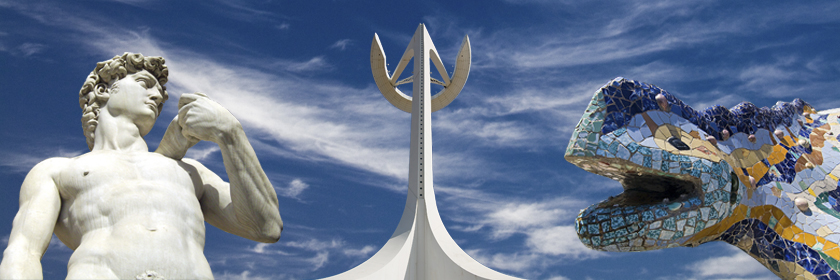


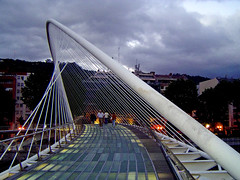


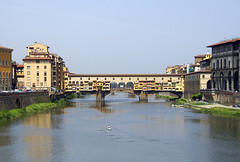




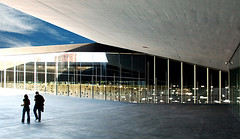



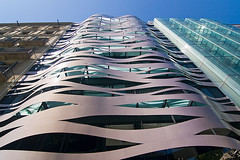



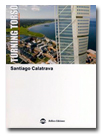

No hay comentarios:
Publicar un comentario